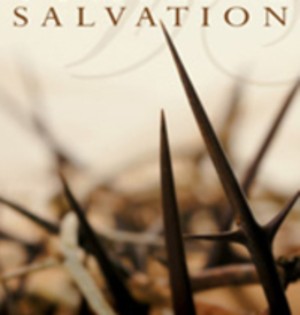So what was the inspiration for the Book of Mormon? According to the LDS church’s official account of the First Vision of Joseph Smith, it goes something like this:
When Joseph Smith was a 15 years old, there were a number of revivals going on in the area of New York where he grew up. He could not figure out why there were so many different denominations and therefore, using the scripture found in James 1:5, which says, “If any of you lack wisdom, let him ask of God, that giveth to all men liberally and upbraideth not; and it shall be given him,” Joseph went to the woods and prayed to God to reveal to him which is the true church so that he could join it. He saw two personages, one of the Heavenly Father and one of the Beloved Son, who told him that they were all wrong and corrupt.
It therefore meant that the true church needed to be restored and Joseph Smith had been preordained to revive the church to its previous glory.
Over a period of a few years, Joseph Smith was visited by an angel named Moroni (the same one who had hidden the golden plates long ago) three additional times and eventually led to their hiding place underground in a hill near his home. Joseph scooped up the plates along with the Urim and Thummim (some stones which were to be used to interpret the Reformed Egyptian that the plates were written in) and ran home with them, excited about this great revelation and find.
So the translating began. Joseph Smith would sit using a seer stone or “viewing glasses” in a hat. It is said that Joseph would read aloud the translation to his scribes (usually chief scribe Oliver Cowdery) and that he was not aloud to continue translation until the text had been read by to him correctly. At times, according to Joseph F. Smith, one of the later prophets of the church, that even if a letter was incorrect he would not be allowed to continue until the spelling was corrected. He would then be given sight of the next portion of the text. In fact, based on the accounts of the witnesses to his translation process, it does not seem that the plates had to be present in the room while he was translating them.
After 3 years of translating to scribes, the original 1830 Book of Mormon was complete.
Martin Harris, one of Smith’s contemporaries and one of the Three Witnesses to the Book of Mormon (we’ll discuss these later) took a copy of some of the characters to a Professor Charles Anthon, a gentleman known for his expertise in ancient languages. Mr. Harris notes the following:
“Professor Anton stated that the translation was correct, more so than any he had before seen translated from the Egyptian. I then showed him those which were not yet translated, and he said that they were Egyptian, Chaldaic, Assyriac, and Arabic; and he said they were true characters. He gave me a certificate, certifying to the people of Palmyra that they were true characters, and that the translation was correct….He asked me how the young man found out that there were gold plates in the place where he found them. I answered that an angel of God had revealed it to him. He then said to me, “Let me see that certificate”…When he took it, he tore it to pieces, saying there was no such thing now as the ministering of angels, and that if I would bring the plates to him he would translate them. I informed him that part of the plates were sealed, and that I was forbidden to bring them. He replied, “I cannot read a sealed book.” I left him and went to Dr. Mitchell, who sanctioned what Professor Anthon had said respecting the characters and translation.”
Five thousand copies of the original book was published. According to the Mormon Times:
In 1837, seven years after 5,000 copies of the original version were printed,
Joseph Smith and Oliver Cowdery returned to the original manuscript to correct mistakes made during the transcription and printing processes.
After a detailed comparison was made between the original manuscript and the 1830 edition, Joseph Smith authorized and made close to 1,000 changes before the printing of the 1837 edition.
The majority of these changes corrected spelling errors, grammatical mistakes and syntax confusion which stemmed from the inexperience of the transcribers, the intricate typesetting methods of the 19th century and the rapidity of the translation.
…Since the 1837 version, the church has published five additional major editions
of the Book of Mormon, all of which included slight changes to improve the clarity of the text.
The current copy of the Book of Mormon was published in 1981 and includes footnotes and references that are not considered to be scripture.
**********************
Since the Bible itself does not speak of the Book of Mormon directly (at any time), I can only point out to you the discrepancies in the story told above.
First we will look at historical problems with this story.
At the time that the First Vision account was said to be occurring (1820), when Joseph was 15 years old, there is no evidence when searching church records of the area where the Smith family lived that any type of revivals were taking place. The churches in the area were growing and declining at a typical rate for that location and era. There was, however, an outbreak of revivals in that area around 1824 according to Joseph’s mother, Lucy. Following her son Alvin’s death on November 19, 1823, a painful time in her life, Lucy noted that “about this time there was a great revival in religion and the whole neighborhood was very much aroused to the subject and we among the rest, flocked to the meeting house to see if there was a word of comfort for us that might believe our over-charged feelings.” (First draft of Lucy Smith’s History, p. 55, LDS Church Archives) Church records for that time support Mrs. Smith’s claims. In a later statement in Times & Seasons by Oliver Cowdery (Vol 2, p. 241, 1840), Mrs. Smith supports this date with the statement, “You will recollect that I mentioned the time of a religious excitement, in Palmyra and vicinity to have been in the 15th year of our Brother J. Smith Jr’s, age that was an error in the type-it should have been the 17th…This would bring the date down to the year 1823.”
There was also great confusion about whether the First Vision was of an angel or of God the Father and Jesus the Son. The following statements were made by Joseph’s contemporaries indicating that the vision was of Moroni, an angel:
- "Some one may say, 'If this work of the last days be true, why did not the Saviour come himself to communicate this intelligence to the world?' Because to the angels was committed the power of reaping the earth, and it was committed to none else." - Apostle Orson Hyde, General Conference Address, Journal of Discourses, Vol. 6, p.335
- The Lord did not come with the armies of heaven, in power and great glory, nor send His messengers panoplied with aught else than the truth of heaven, to communicate to the meek the lowly, the youth of humble origin, the sincere enquirer after the knowledge of God. But He did send His angel to this same obscure person, Joseph Smith Jun….”(Journal of Discourses 2:170-171)
- Church Apostle Heber C. Kimball, speaking Nov. 8th, 1857, seemed to be oblivious to any vision where Smith saw God and Christ: "Do you suppose that God in person called upon Joseph Smith, our Prophet? God called upon him; but God did not come himself and call, but he sent Peter to do it. Do you not see? He sent Peter and sent Moroni to Joseph, and told him that he had got the plates." (Journal of Discourses, vol.6, p.29)
- Church Apostle John Taylor explained in a sermon March 1, 1863: "How did this state of things called Mormonism originate? We read that an angel came down and revealed himself to Joseph Smith and manifested unto him in vision the true position of the world in a religious point of view." (Journal of Discourses, Vol. 10, p.127)
However, the church still maintains the official story to be of the Heavenly Father and the Beloved Son making this grand appearance for the First Vision.
In the 1851 Pearl of Great Price on page 41, the following statement can be seen recalling a vision, “He called me by name and said unto me that he was a messenger sent from the presence of God, and that his name was Nephi.” When the book was published in 1878, the name “Nephi” had been replaced by “Moroni” by Orson Pratt to be consistent with the known tale. The original handwritten manuscript of the Pearl of Great Price dictated by Joseph Smith reveals that the name was originally written “Nephi,” but that someone at a later date has written the word “Moroni” above the line. All evidence indicates that this change was made after Joseph Smith’s death.
A point to contend about the translation and verification by Professor Anthon: how could he have verified the translation if, in fact, he did not see the original to compare it to? He might have verified the language, but could not have verified the translation itself without the source. Also, the language itself was not verifiable because Reformed Egyptian is not any language that has ever been known to mankind, including Egyptologists. How could this man confirm the translation of a language that had never seen? And what he was stated to have confirmed was Egyptian, Chaldaic…etc…but there was no mention of Reformed Egyptian.
In addition to this evidence straight from Mr. Harris’ account, the following statement was made in a letter from Professor Anthon himself to John H. Gilbert, Esq., the type-setter for the Book of Mormon:
“The paper in question was, in fact, a singular scroll. It consisted of all kinds of singular characters, disposed in columns, and had evidently been prepared by some person who had before him at the time a book containing various alphabets; Greek and Hebrew letters, crosses, and flourishes, Roman letters inverted or place sidewise [sideways], arranged and placed in perpendicular column, and the whole ended in a rude delineation of a circle, divided into various compartments, arched with various strange marks, and evidently copied after the Mexican calendar, given by Humboldt, but copied in such a way as not to betray the source whence it was derived. I am thus particular as to the contents of the paper, inasmuch as I have frequently conversed with my friends on the subject since the Mormon excitement began, and well remembered that the paper contained anything else but ‘Egyptian Hyroglyphics.’”
**********************
No commentary from me today. The reading “assignment” was long enough. Straight to the questions:
**********************
- In the first history of Mormonism from 1835 written under Joseph Smith's direction, it says that during the night of September 21, 1823 Joseph Smith began praying in his bed to learn "the all important information, if a Supreme being did exist, to have an assurance that he was accepted of him." (LDS periodical Messenger and Advocate, Kirtland, Ohio, Feb. 1835) How could that possibly make sense if Smith had already seen God face-to-face some three years earlier in 1820?
- Why doesn't the First Vision play an important role in Mormon history until the 1860s? No one seems to really mention it before then even though it is now deemed by Latter-day Saints to be the most important event in almost 2,000 years.
- Records show that in June of 1828, Joseph Smith applied for membership in his wife's Methodist Church. He also joined Methodist classes taught there. (The Amboy Journal, Amboy, IL, details Smith's activity in the Methodist Church in 1828. April 30, 1879 p. 1; May 21, 1879 p.1; June 11, 1879, p.1; July 2, 1879 p.1.). If no other church was correct, as he had learned in a personal visitation from God, why did he try to join the Methodist church?
- A point to contend about the translation and verification by Professor Anthon: How could Prof Anthon have verified the translation of the scripture he saw if, in fact, he did not see the original to compare it to? He might have verified the language, but could not have verified the translation itself without the source.
- Also, the language itself was not verifiable because Reformed Egyptian is not any language that has ever been known to historicans, including Egyptologists. How could this man verify the translation of a language that had never seen? Note that what he was stated to have confirmed was Egyptian, Chaldaic…etc…but there was no mention of Reformed Egyptian.
- If the translation of the Book of Mormon could not continue until it had been read back to him correctly, why would there be any corrections needed, including grammar, spelling, and the like? (We will cover this in a much larger topic later.)
- How can we be sure that the translation of the Book of Mormon into other languages is correct if only the English one was inspired?
To quote early Mormon Apostle Orson Pratt:
"The Book of Mormon must be either true or false. If true, it is one of the most important messages ever sent from God…If False, it is one of the most cunning, wicked, bold, deep-laid impositions ever palmed upon the world, calculated to deceive and ruin millions…The nature of the "Book of Mormon" is such, that if true, no one can possibly be saved and reject it; If false, no one can possibly be saved and receive it…If, after a rigid examination, it be found imposition, it should be extensively published to the world as such; the evidences and arguments on which the imposture was detected, should be clearly and logically stated, that those who have been sincerely yet unfortunately deceived, may perceive the nature of deception, and to be reclaimed, and that those who continue to publish the delusion may be exposed and silenced…by strong and powerful arguments - by evidences adduced from scripture and reason…" (Orson Pratt's Works, Divine Authenticity of the Book of Mormon, Liverpool, 1851, pp. 1, 2.)
So where does that leave us with the Book of Mormon?






No comments:
Post a Comment